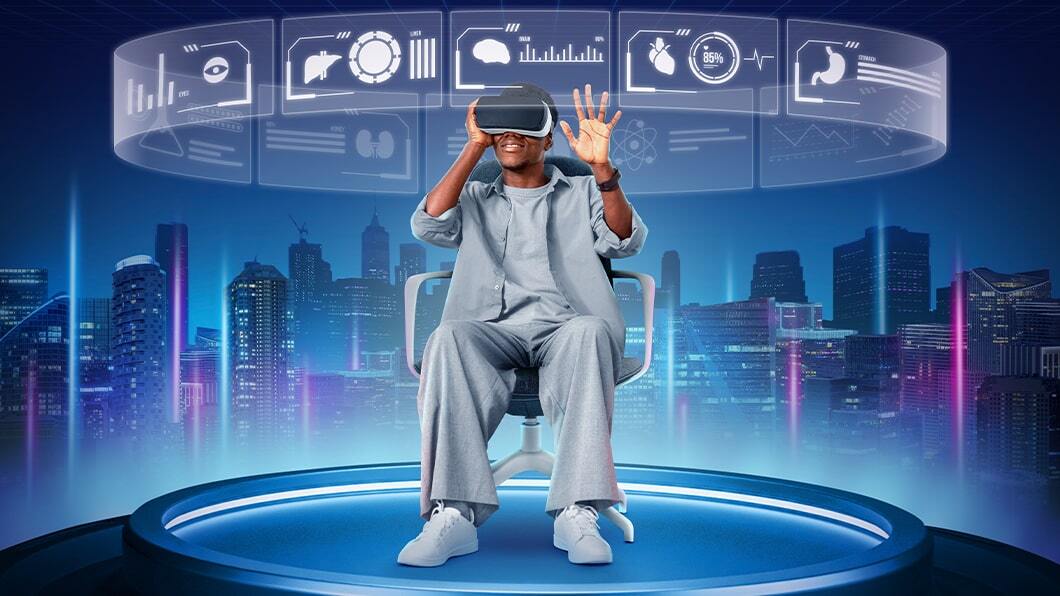
Wearable Technology and its Influence on Lifestyle
Introduction
Wearable technology has emerged as a significant trend in recent years, revolutionizing the way we interact with our surroundings and impacting various aspects of our lives. From fitness trackers and smartwatches to augmented reality glasses and health monitoring devices, wearable technology has made its way into our daily routines, influencing our lifestyle choices and habits. In this article, we will explore the different types of wearable technology, examine their benefits, discuss their impact on lifestyle, delve into the intersection of wearable tech and fashion, address challenges and concerns, and look into future trends in this exciting field.
Types of Wearable Technology
One of the most common forms of wearable technology is smartwatches and fitness trackers. These devices not only tell the time but also provide various health and fitness metrics, including heart rate, steps taken, and calories burned. They have become popular among individuals who want to monitor their physical activity and maintain a healthy lifestyle.
Augmented reality (AR) glasses, such as the much-talked-about Apple Vison Pro, offer an immersive experience by overlaying digital information onto the real world. They have the potential to transform industries like gaming, navigation, and education, providing users with enhanced visual content and interactive experiences.
Smart clothing and accessories are another category of wearable technology. These innovative garments and accessories incorporate sensors and technology to monitor biometric data, track movements, and even adjust temperature and moisture levels. They offer both functionality and style, making them popular among fitness enthusiasts and fashion-forward individuals.
Health monitoring devices, such as glucose monitors and sleep trackers, have gained significant attention for their ability to provide real-time health information and personalized insights. These devices empower individuals to take control of their well-being and make informed decisions about their health.
Benefits of Wearable Technology

Wearable technology offers numerous benefits that positively impact our daily lives. Firstly, it enables health and fitness tracking, allowing individuals to monitor their physical activity, heart rate, sleep patterns, and more. This data empowers users to set and achieve their health goals, leading to improved well-being.
Convenience and accessibility are also significant advantages of wearable tech. With smartwatches and fitness trackers strapped to our wrists, we can easily access notifications, messages, and calls without reaching for our smartphones. This seamless connectivity ensures we stay connected and informed while keeping our hands free.
Furthermore, wearable technology enhances productivity and efficiency. With features like voice assistants and reminders, we can manage our tasks and schedules effortlessly. Wearable devices also enable quick access to information, whether it’s checking the weather or getting directions, minimizing the need to use other devices.
Impact on Lifestyle

The influence of wearable technology on lifestyle is profound. It has significantly impacted various areas of our lives, including fitness and wellness, communication and connectivity, entertainment and gaming, and work and productivity.
In terms of fitness and wellness, wearable devices have become essential tools for individuals striving to maintain an active lifestyle. They provide real-time feedback on physical activity, heart rate, and sleep patterns, motivating users to make healthier choices and reach their fitness goals. Wearable tech has transformed the way we approach exercise, making it more engaging and personalized.
When it comes to communication and connectivity, wearable technology has made staying connected easier than ever. With smartwatches and AR glasses, we can receive and respond to messages, calls, and social media notifications without having to constantly check our phones. This seamless integration allows us to stay in touch with loved ones and stay updated on important information while being more present in the moment.
The entertainment and gaming industry has also been revolutionized by wearable tech. Virtual reality (VR) headsets and AR glasses provide immersive experiences, transporting users to virtual worlds and overlaying digital content onto the real world. From gaming and interactive storytelling to virtual tours and educational experiences, wearable technology has opened up a new realm of possibilities for entertainment and engagement.
In the workplace, wearable technology has the potential to increase productivity and efficiency. From smartwatches that enable quick access to emails and calendars to smart glasses that provide hands-free access to information and instructions, these devices streamline workflows and minimize distractions. They allow professionals to stay organized, communicate seamlessly, and access information on the go, ultimately enhancing their productivity.
Wearable Technology and Fashion

The intersection of wearable technology and fashion has given rise to a new era of tech-infused style. Wearable devices are no longer just functional gadgets; they have become fashion accessories that merge technology with aesthetics. The integration of technology and style has opened up exciting possibilities, where form meets function in the most fashionable way.
Fashion-forward wearable devices, such as designer smartwatches and smart jewelry, cater to individuals who prioritize both style and functionality. These devices seamlessly blend into our everyday outfits, allowing us to express our personal style while enjoying the benefits of wearable technology. Fashion houses and tech companies are increasingly collaborating to create innovative wearables that are as visually appealing as they are technologically advanced.
The collaboration between the fashion and tech industries is not limited to wearable devices alone. Runway shows and events showcase the fusion of fashion and technology, highlighting garments and accessories that incorporate cutting-edge technology. From garments that change color or pattern based on environmental conditions to accessories that charge our devices wirelessly, these collaborations push the boundaries of creativity and innovation.
Challenges and Concerns

While wearable technology brings many advantages, it also raises certain challenges and concerns that need to be addressed. One of the primary concerns is privacy and data security. Wearable devices collect sensitive personal data, including health information and location data. Ensuring that this data is protected from unauthorized access and used responsibly is crucial to maintaining user trust.
Another challenge is the potential dependence and addiction that can arise from constantly wearing and relying on wearable devices. Some individuals may become overly reliant on the data and feedback provided by these devices, potentially leading to anxiety or unhealthy behaviors. It is important to strike a balance and use wearable technology as a tool to enhance our lives rather than let it dictate our every move.
The social implications of wearable technology also deserve attention. In an increasingly connected world, where everyone is constantly monitoring and sharing their activities, there can be a blurring of boundaries between the digital and physical realms. Finding a balance between being present in the real world and embracing the possibilities of wearable tech is essential for maintaining genuine human connections.
Future Trends in Wearable Technology

As technology continues to advance, the future of wearable technology looks promising. Here are some exciting trends to watch out for:
- Advancements in sensor technology: Wearable devices will become even more accurate and sophisticated in capturing and analyzing data. Sensor technology will improve, allowing for more precise health monitoring, activity tracking, and environmental sensing. This will lead to more personalized insights and recommendations for users.
- Integration with artificial intelligence (AI): AI will play a significant role in wearable technology, enabling devices to learn from user behavior and adapt accordingly. Wearable devices will become smarter in understanding and predicting our needs, providing proactive assistance and personalized experiences. AI-powered voice assistants will become more natural and intuitive, allowing for seamless interactions with wearable devices.
- Medical and healthcare applications: Wearable technology will continue to expand its presence in the medical and healthcare fields. Devices capable of monitoring vital signs, detecting early signs of diseases, and even administering medication will become more prevalent. Wearable tech will empower individuals to take control of their health and enable healthcare professionals to access real-time data for more accurate diagnoses and personalized treatment plans.
Conclusion
Wearable technology has become an integral part of our lives, offering a range of benefits and influencing our lifestyle choices. From smartwatches and fitness trackers to augmented reality glasses and health monitoring devices, wearable tech has transformed the way we interact with our surroundings. It has enhanced our fitness and wellness journeys, improved communication and connectivity, introduced new avenues for entertainment, and increased productivity in the workplace.
The intersection of wearable technology and fashion has brought about stylish and functional devices that merge technology with personal style. Collaborations between fashion and tech industries continue to push the boundaries of creativity, resulting in innovative wearable designs that cater to both fashion enthusiasts and tech-savvy individuals.
However, challenges such as privacy concerns, dependence on wearable devices, and potential social implications need to be addressed. Striking a balance between utilizing wearable technology as a tool for convenience and not letting it overshadow genuine human connections is essential.
Looking ahead, advancements in sensor technology, integration with AI, and the expansion of wearable tech in medical and healthcare applications are trends that will shape the future. Wearable devices will become even more intelligent, personalized, and capable of improving our lives in numerous ways.
5 Unique FAQs
1. Are wearable devices waterproof?
While some wearable devices are water-resistant, not all of them are fully waterproof. It’s important to check the specifications and ratings of the specific device you’re interested in to determine its water resistance capabilities. Some devices are designed to withstand water splashes and sweat, while others can be worn while swimming or showering.
2. Can wearable technology replace traditional medical devices?
Wearable technology has the potential to complement traditional medical devices, but it cannot fully replace them. While wearable devices can provide valuable health data and insights, they may not be as accurate or specialized as medical-grade equipment. They can, however, aid in monitoring certain conditions and providing individuals with proactive health information.
3. How secure is the data collected by wearable devices?
Data security is a significant concern when it comes to wearable technology. Manufacturers and developers understand the importance of protecting user data and employ various security measures. However, it’s essential for users to be cautious and choose reputable brands, utilize strong passwords, and keep their devices updated to minimize the risk of data breaches.
4. Can wearable technology improve workplace productivity?
Yes, wearable technology can enhance workplace productivity. With features like notifications, reminders, and access to information at a glance, wearable devices can streamline tasks and minimize distractions. However, it’s important for individuals to use these devices mindfully and strike a balance between utilizing their features and staying focused on their work.
5. What are the implications of wearable technology on privacy?
Wearable technology collects personal data, such as health information and location data. This raises concerns about privacy and how that data is used and protected. It’s crucial for manufacturers and developers to prioritize data privacy and security, implementing robust measures to safeguard user information. Users should also review privacy policies, understand data sharing practices, and exercise caution when granting permissions to apps and services.














